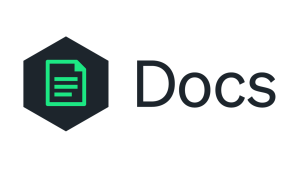Application transaction monitoring is a critical aspect that ensures seamless operations, offering insights and strategies to enhance business performance. Think of application transaction monitoring as a roadmap, providing real-time insights into how your applications are performing. Just like a map helps you spot obstacles and plan your route, monitoring shows you exactly what’s happening with your applications—where they're excelling and where they might hit a bump.
In this guide, we’ll explore why applicational transaction monitoring is important for business growth and how to implement it.
What is application transaction monitoring?
Application transaction monitoring (ATM) is the systematic process of observing and analyzing the interactions and transactions occurring within an application environment. It's a vital practice that ensures critical business processes function smoothly.
Transactions drive business success, so ATM holds immense significance. It provides actionable insights into app performance, reliability, and overall health of applications, directly impacting user experiences and business outcomes.
Key components of ATM
- Transaction tracking: Monitoring individual transactions to ensure they’re processed efficiently and effectively.
- Performance metrics: Analyzing various metrics such as response times and throughput to gauge the overall performance of transactions.
- Error detection and resolution: Identifying errors and bottlenecks in transactions and promptly resolving them to maintain optimal operations.
Approaches to transaction monitoring
There are a few different approaches to effective transaction monitoring:
Real-time monitoring
Real-time transaction monitoring is crucial for observing transactions as they occur, enabling swift issue detection and resolution. Monitoring financial transactions, customer interactions, or data transfers instantly is vital in timing-sensitive environments. Tools feature alert systems for quick anomaly detection, aiding in prompt responses to threats or system failures, ensuring process integrity and customer trust.
Retrospective transaction monitoring
Retrospective transaction monitoring involves analyzing historical transaction data to uncover trends, identify patterns, and learn from past activities. This method is invaluable for gaining insights into transaction performance over time, and helping businesses to identify areas for optimization and improvement.
By analyzing past transactions, organizations can pinpoint recurring issues, fraudulent patterns, or bottlenecks in their processes. These insights are crucial for informed decision-making and strategic planning, allowing businesses to enhance their transactional processes and prepare more effectively for future demands.
Proactive transaction monitoring
Proactive transaction monitoring combines real-time immediacy with insights from analysis, anticipating and addressing issues before they arise. By setting thresholds based on historical data, proactive transaction monitoring predicts and prevents problems, moving from reactive to preventative, ensuring smooth transactions with minimal risk. This approach prioritizes foresight and preparedness for a reliable environment.
An all-encompassing approach
An effective transaction monitoring strategy should integrate real-time monitoring for immediate issue resolution, retrospective monitoring for insightful analysis and optimization, and proactive monitoring for anticipatory problem-solving. This comprehensive approach ensures that transactional systems are not only reactive and resilient but also continuously evolving and improving.
Why is ATM important for business growth?
ATM is essential for business growth as it directly impacts critical areas of every business, including:
Enhancing user experience: By closely monitoring application transactions, businesses can ensure a seamless, efficient user experience, a key factor in customer satisfaction and retention. Users expect fast, reliable, and error-free transactions, and monitoring helps identify and resolve issues before they affect the user, thereby maintaining a high standard of service.
Improving operational efficiency: Transaction monitoring significantly improves operational efficiency. It provides valuable insights into performance bottlenecks, allowing businesses to optimize processes, reduce resource wastage, and enhance overall productivity.
Mitigating downtime and revenue loss: Any downtime can lead to substantial revenue loss and damage to brand reputation. ATM enables organizations to proactively identify and address system vulnerabilities, reducing the likelihood of downtime.
Choosing the right application transaction monitoring tool
Choosing the right ATM tool is a crucial decision for any organization because it directly impacts the efficiency and reliability of your business operations. Here are the key factors to consider:
- Integration and compatibility: Ensure the tool is compatible with your existing technology stack.
- Real-time monitoring capabilities: The tool should offer real-time monitoring to detect and address issues as they occur.
- Comprehensive data analysis: Look for a tool that provides in-depth analysis capabilities. It shouldn’t only monitor transactions but also analyze data to identify trends, patterns, and potential bottlenecks.
- Customization and scalability: The ability to customize the tool according to your specific needs is important. As your business grows, the tool should be scalable to accommodate increasing loads and evolving requirements.
- User-friendly interface: A tool with an intuitive interface makes it easier for your team to operate and reduces the learning curve. This ensures that your team can leverage the tool’s full capabilities more efficiently.
- Alerts and notifications: The tool should provide timely and accurate alerts so your team can promptly address issues. The alert system should be customizable to avoid alert fatigue.
- Security features: The tool should have robust security measures in place to protect data integrity and comply with regulatory standards.
- Support and documentation: Good customer support and comprehensive documentation are invaluable for troubleshooting and maximizing the utility of the tool. Ensure the vendor offers reliable support and has a good reputation for customer service.
- Cost-effectiveness: The most expensive tool isn’t always the best fit for your needs. Evaluate the tool's return on investment (ROI) in terms of the benefits it brings to your business operations.
- Vendor reputation and reviews: Research the vendor’s reputation. Read customer reviews and case studies to understand the tool’s performance in real-world scenarios and its reliability.
Remember, the right tool should address your current needs and adapt to future challenges and changes in your business environment. Taking a thoughtful approach to this decision can significantly enhance your operational efficiency and transaction reliability.
How to implement application transaction monitoring in your business
Implementing ATM in your business involves a series of well-planned steps to ensure it effectively supports your operational needs and objectives.
Step 1: Understand your application environment
Grasping the intricacies of your application environment is vital, particularly when it comes to key transactions. Pinpointing the crucial transactional processes within complex, interlinked systems is a foundational step in identifying where to focus your monitoring efforts.
Step 2: Configure monitoring parameters
Choosing the right monitoring parameters is a nuanced task. It involves a careful balance: setting metrics and thresholds that are sensitive enough to catch critical issues but avoid inundating you with false alarms. This is particularly challenging for background operations that might not always be in the foreground of monitoring strategies.
Step 3: Navigate through integration challenges
The integration phase can be tricky, often marked by compatibility issues or potential disruptions to ongoing operations. Especially within intricate infrastructures, extensive configuration might be required, which can lead to delays or temporary disruptions.
Step 4: Train and aid your team in adoption
Preparing your team to effectively utilize ATM tools is crucial. Overcoming initial resistance or unfamiliarity, and ensuring that your team is adept at interpreting data and responding to alerts promptly, can be challenging but is essential for effective monitoring.
Common challenges of application transaction monitoring to overcome
There are a few challenges that might occur when implementing ATM in your environment, including:
- Complexity of the application landscape: The intricate nature of modern applications, especially in multi-tiered or microservices-based architectures, poses challenges in identifying and prioritizing critical transactions for monitoring.
- Ensuring data accuracy and relevance: Maintaining the relevance and accuracy of monitored data can be challenging. As systems evolve, ensuring that monitoring parameters remain aligned with evolving business needs and accurately reflect transaction patterns, including background practices, becomes crucial.
- Resistance to change: Encountering resistance to adopting new technological practices and tools might impede seamless implementation. Convincing stakeholders and teams of the benefits of ATM and its direct impact on operational efficiency and user satisfaction is essential.
Best practices for effective application transaction monitoring
ATM can provide you with key insights into the health and performance of your applications. Here are some best practices to ensure your monitoring strategy is as effective as possible:
Regularly review and update monitoring parameters: Continuously updating monitoring parameters is crucial for swiftly addressing emerging performance problems. This practice ensures alignment with evolving business needs, enabling proactive issue resolution.
Open collaboration between development and operations teams: Foster collaboration between teams for a shared understanding of performance problems. This teamwork facilitates seamless troubleshooting and rapid resolution.
Utilize ATM data for continuous improvement: Leverage ATM data to identify and rectify performance problems. Analysis of this data drives ongoing improvements in application performance and user experience.
Using New Relic for application transaction monitoring
Adopting proactive monitoring strategies is beneficial and essential for businesses aiming to thrive in dynamic digital landscapes. Embracing proactive approaches empowers businesses to anticipate and resolve potential performance problems before they impact operations or user experiences.
New Relic's innovative approach to application transaction monitoring sets it apart. Its suite of tools—like distributed tracing—and business modeling tools—like Pathpoint—offers a comprehensive and intuitive interface, providing businesses with actionable insights into their application performance. By seamlessly integrating with existing infrastructures, New Relic facilitates smooth implementation and gives businesses real-time visibility into critical transactions.
Next steps
Ready to power business growth?
Enhance user experience, improve your operational efficiency and mitigate revenue loss from downtime with New Relic's APM 360 tool. Get a 360-degree view of your application health by marrying your application observability with infrastructure monitoring and log management capabilities. Start for free today! Sign up for New Relic and access 100 GB of free data ingest per month.
The views expressed on this blog are those of the author and do not necessarily reflect the views of New Relic. Any solutions offered by the author are environment-specific and not part of the commercial solutions or support offered by New Relic. Please join us exclusively at the Explorers Hub (discuss.newrelic.com) for questions and support related to this blog post. This blog may contain links to content on third-party sites. By providing such links, New Relic does not adopt, guarantee, approve or endorse the information, views or products available on such sites.




